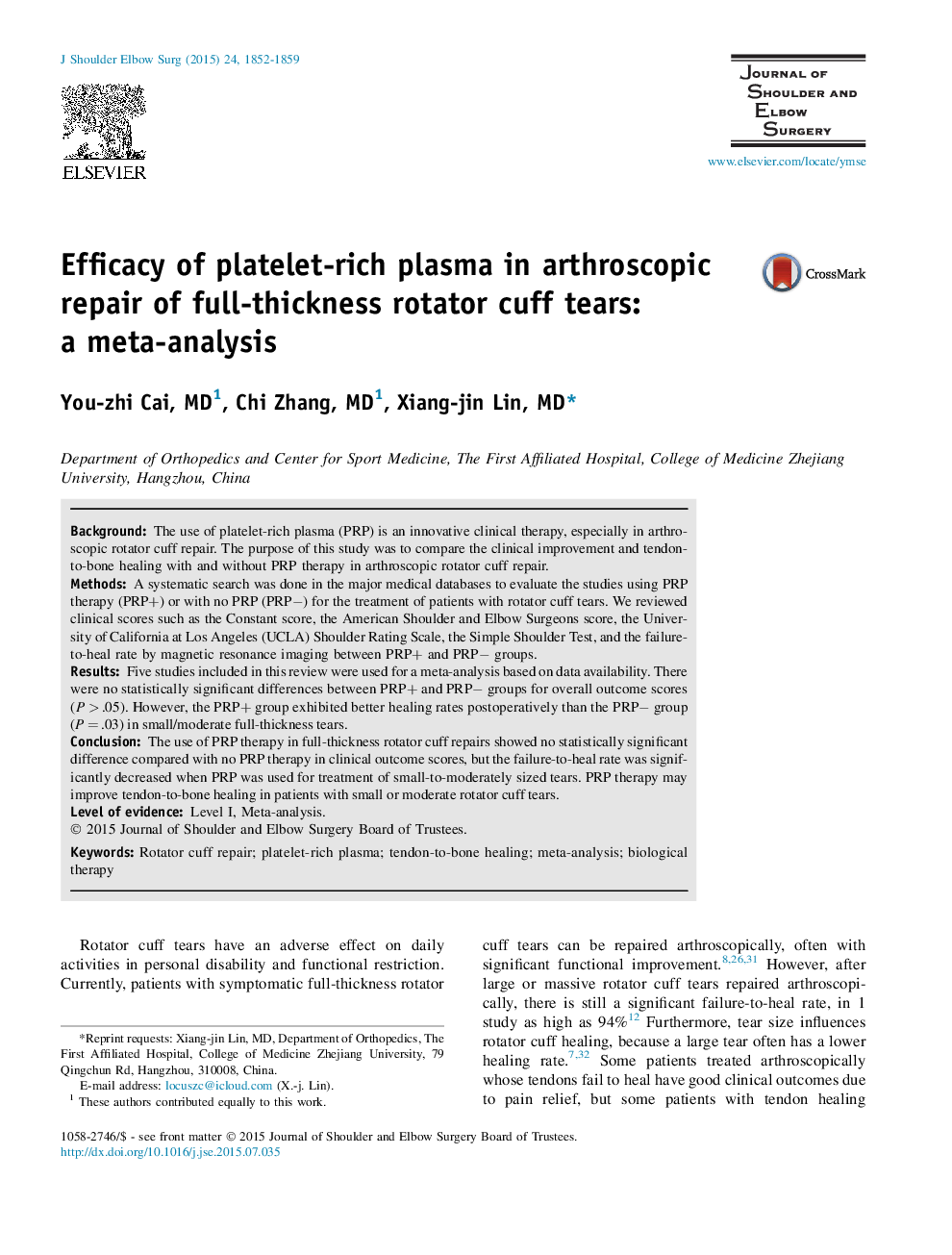| Article ID | Journal | Published Year | Pages | File Type |
|---|---|---|---|---|
| 4073000 | Journal of Shoulder and Elbow Surgery | 2015 | 8 Pages |
BackgroundThe use of platelet-rich plasma (PRP) is an innovative clinical therapy, especially in arthroscopic rotator cuff repair. The purpose of this study was to compare the clinical improvement and tendon-to-bone healing with and without PRP therapy in arthroscopic rotator cuff repair.MethodsA systematic search was done in the major medical databases to evaluate the studies using PRP therapy (PRP+) or with no PRP (PRP−) for the treatment of patients with rotator cuff tears. We reviewed clinical scores such as the Constant score, the American Shoulder and Elbow Surgeons score, the University of California at Los Angeles (UCLA) Shoulder Rating Scale, the Simple Shoulder Test, and the failure-to-heal rate by magnetic resonance imaging between PRP+ and PRP− groups.ResultsFive studies included in this review were used for a meta-analysis based on data availability. There were no statistically significant differences between PRP+ and PRP− groups for overall outcome scores (P > .05). However, the PRP+ group exhibited better healing rates postoperatively than the PRP− group (P = .03) in small/moderate full-thickness tears.ConclusionThe use of PRP therapy in full-thickness rotator cuff repairs showed no statistically significant difference compared with no PRP therapy in clinical outcome scores, but the failure-to-heal rate was significantly decreased when PRP was used for treatment of small-to-moderately sized tears. PRP therapy may improve tendon-to-bone healing in patients with small or moderate rotator cuff tears.
